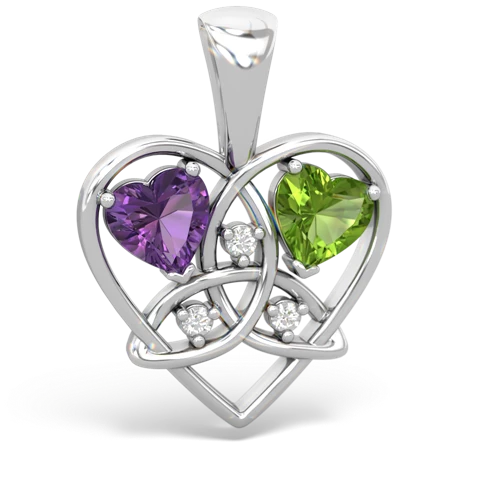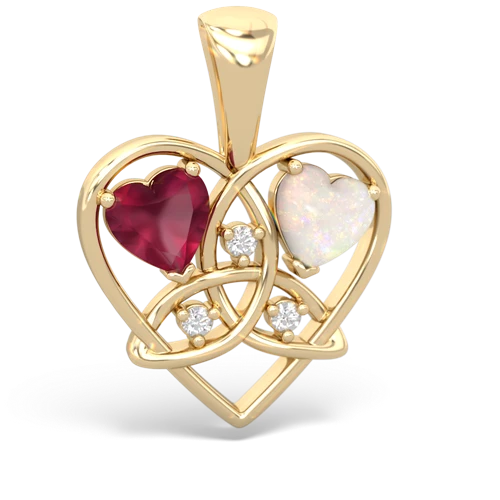
- 5 x 5 mm Heart
- 0.40 carats
- AA Quality
- eye-clean
- Origin: Japan

- 5 x 5 mm Heart
- 0.40 carats
- AA Quality
- eye-clean
- Origin: Brazil
The always meaningful symbols of the celtic knot and the classic heart are joined in this lab emerald with citrine pendant. One unbroken line weaves over and under itself to create the two symbols, embracing two gemstone hearts that represent your neverending love. It's available as a necklace with a matching 18 inch chain, or purchase just the pendant to place on your own chain. Lab Emerald is known as the gem of love and life and is the birthstone for the month of May. Citrine is known as the gem of optimism and renewal and is the birthstone for the month of November.



I am thrilled!! The jewelry arrived and is beautiful!! Thank you!!
Karen W.
Somerset, WI
Monday, September 9, 2024

Hello, I just wanted to write to say thank you. The custom ruby and opal pendant you made for my niece is beautiful! She LOVED it. I was very impressed with the quality of the pendant, as well as your on-line ordering process, and prompt customer service. I would certainly recommend your business, and order from you again. Sincerely, Diane
Diane C.
Ramsey, NJ
Monday, June 29, 2020